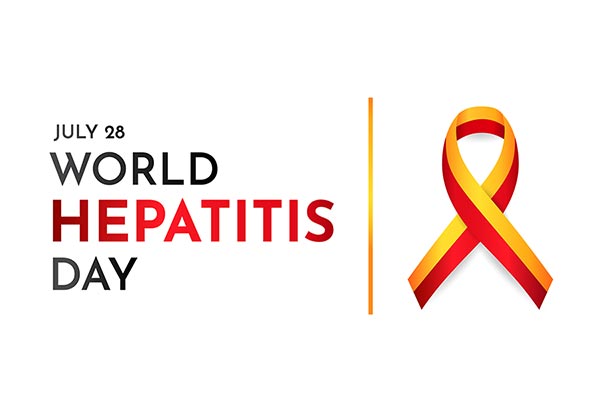World Hepatitis Day is celebrated this Wednesday, July 28, and liver experts at UHN and around the globe are sounding the alarm over the staggering number of deaths that will occur in the aftermath of the COVID-19 pandemic.
Hepatitis C – one of the deadliest strains of the virus – is a silent and dangerous disease. It is curable, but an effective treatment requires early detection.
Before the pandemic, the World Health Organization (WHO) estimated 71 million people were living with chronic hepatitis C infection, and around 400,000 of them would die every year. It is estimated that an additional 72,000 deaths will occur by 2030 in people who were not diagnosed because of the impact the pandemic had on screening efforts.
"These are preventable deaths," explains Dr. Hemant Shah, staff hepatologist at the Toronto Centre for Liver Disease at UHN.
"If these people were screened and diagnosed with hepatitis C infection earlier, they could have been treated and cured before the disease evolved to cirrhosis or liver cancer, which are the most common causes of death for these patients."

As hepatitis C is a silent disease, strategies to identify people living with the infection have relied heavily in the past on in-person pop-up screening clinics, which were largely canceled during the pandemic.
UHN's Viral Hepatitis Care Network (VIRCAN) has experienced a steep drop of more than 50 per cent in people being screened for hepatitis C, and this is happening all across Ontario as well.
So the teams at VIRCAN started to pivot their strategies, and use creative approaches to jumpstart screening.
One of the initiatives was to partner with the Centre for Addiction and Mental Health (CAMH) to provide hepatitis screening at mass COVID vaccination sites. The idea was to offer hepatitis screening while people were waiting 15 minutes – the recommended observation period after receiving the vaccine, and it has proven to be very effective.
"They are already there, and with some time to spare after their shots, so it's a win-win," says Dr. Shah.
"We must continue to look for new screening strategies that will make sense considering the culture shift in all aspects of life after the pandemic."
Now that more people are working from home, VIRCAN is considering what are the best venues to host pop-up screening clinics. The goal is to find other good solutions like the mass COVID vaccination site – which has tested to date around 2,000 individuals, identifying over 20 hepatitis C positive patients and connecting them to care, before the disease progresses.
Combined virtual and in-person model of care
Another important learning in the aftermath of the COVID-19 pandemic is improving access to virtual care – for patients living with hepatitis and other liver conditions.
While before the pandemic only one per cent to two per cent of appointments were done virtually at UHN's Francis Family Liver Clinic, that number is now at 70 per cent.
"As with other specialties, we had to pivot quickly to virtual care," explains Dr. Shah.
"However, while other programs saw a decline in referrals and patients attending appointments, we had a surge of 25 per cent in appointments."
Dr. Shah says it was particularly surprising to see that virtual care was an important tool to reach historically marginalized populations, at higher risk of hepatitis and other liver conditions.
"This may seem counterintuitive as you would think someone with low income would have a hard time accessing a phone or a computer, and while that may be true, we also underestimate how inaccessible hospitals can be to certain populations," he says.
"The use of technology and partnering with community organizations have proven to be very effective to connect with these patients, and also getting them to the clinic for an in-person follow-up."
If on one hand virtual care is a positive outcome from COVID, on the other hand it is also important to keep in mind the critical role of patients and care teams meeting face-to-face.
This is the biggest challenge as we move past the most critical stages of the pandemic, says Dr. Harry Janssen, Director of the Toronto Centre for Liver Disease and the Francis Family Liver Clinic.
He praises his team for the amazing work pivoting to virtual care and establishing partnerships with community organizations in the past 16 months, but believes now the focus will be to get patients feeling safe to come in when they need to.
"No expert knows the magic number for this ideal balance between virtual and in-person care, but I think we need to be very sensitive to understand what the best fit is for each patient considering convenience but, most importantly, their individual clinical needs," Dr. Janssen says.
For more information, visit
Toronto Centre for Liver Disease and Frances Family Liver Clinic website. To learn about hepatitis screening efforts, go to
VIRCAN's page.
